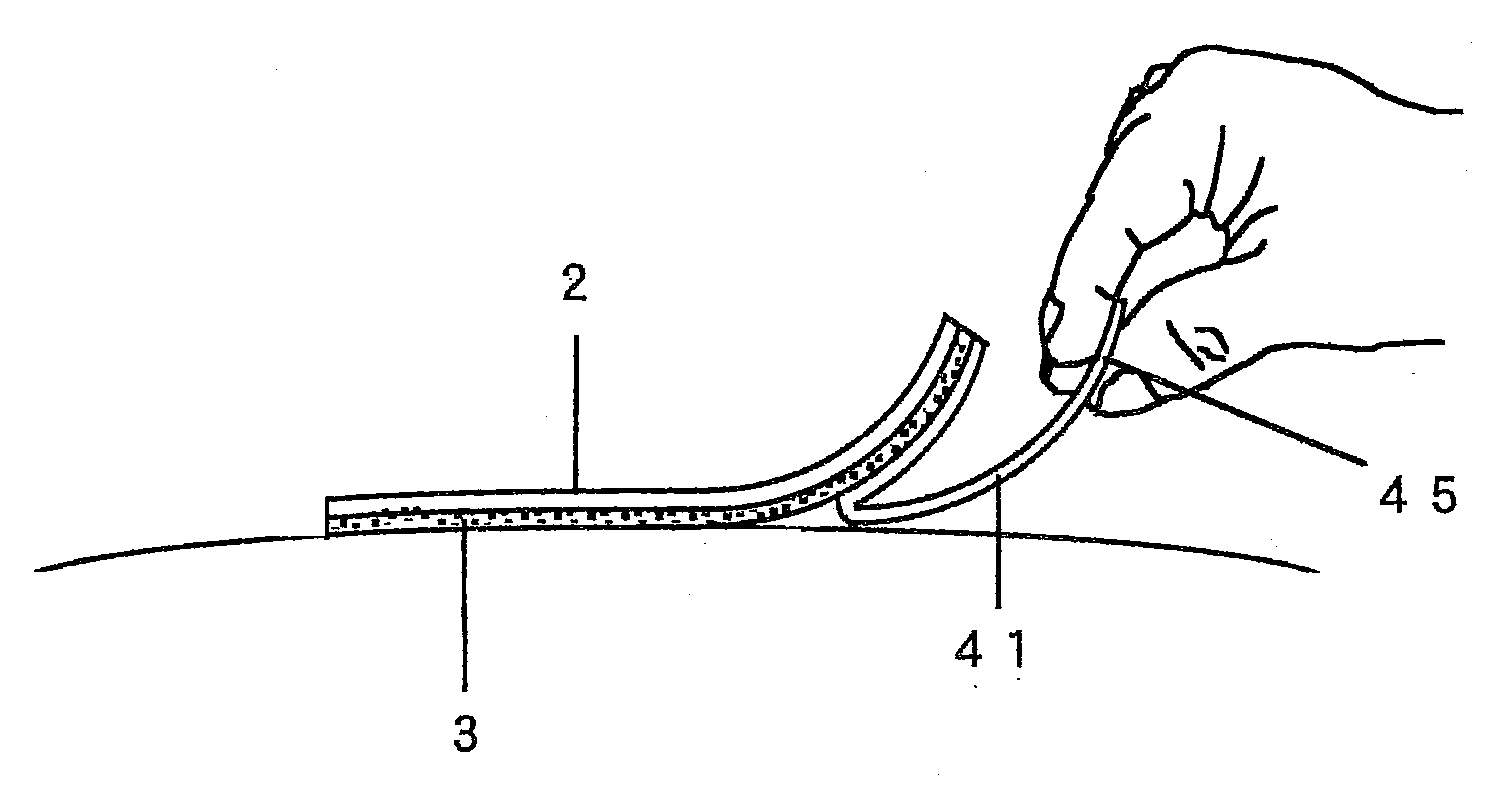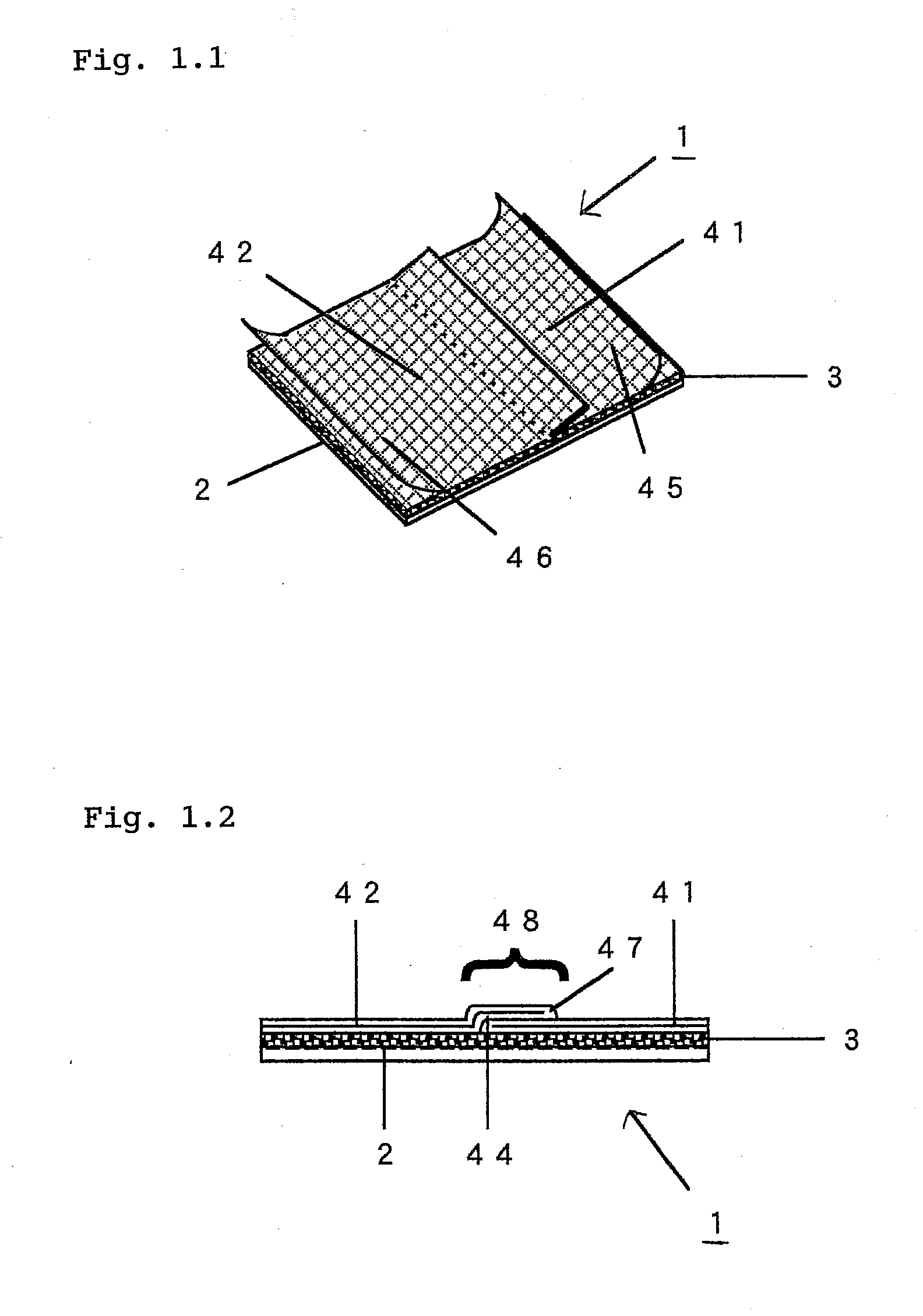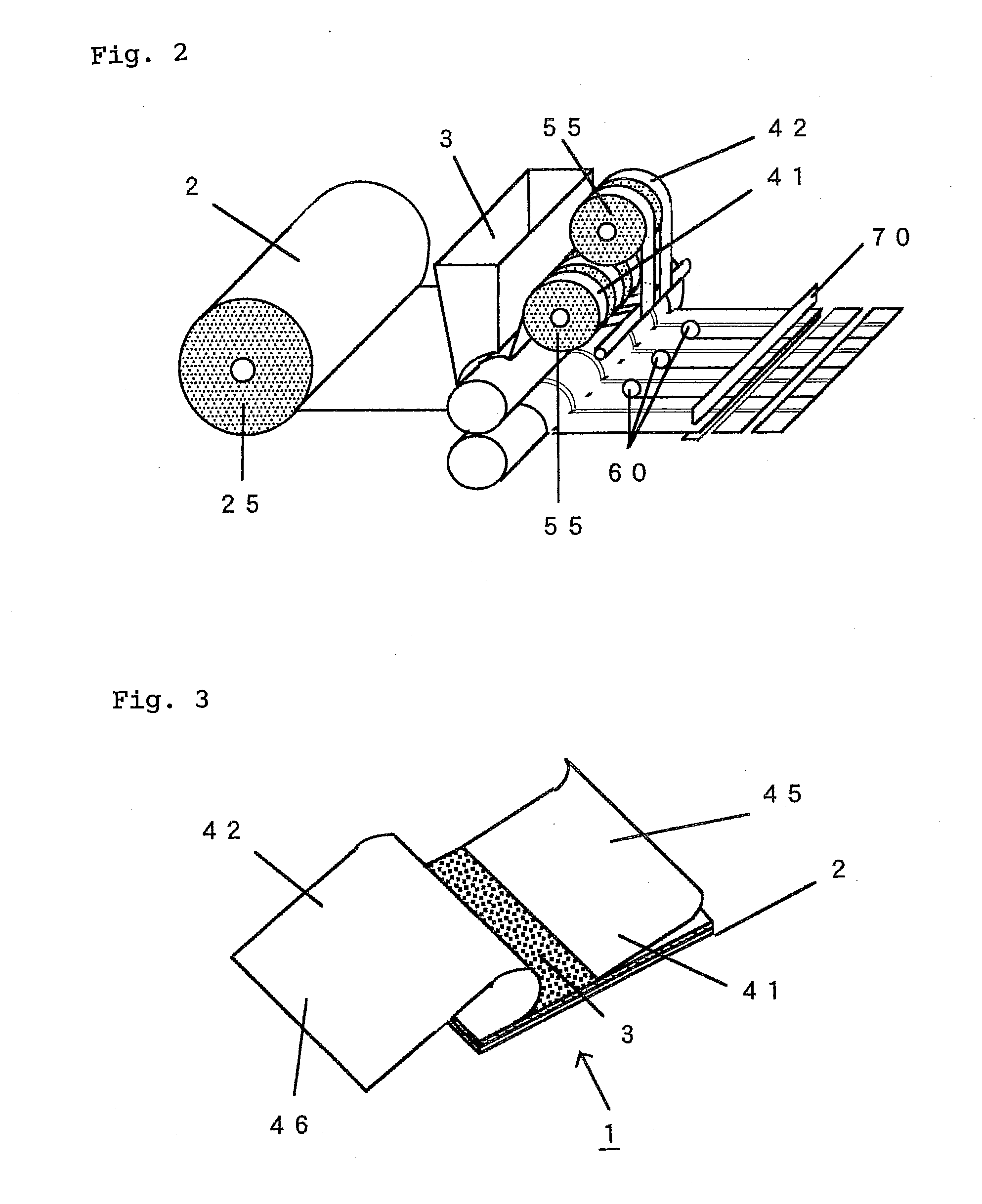Adhesive Patch and Production Method Thereof
a technology of adhesive patches and adhesive strips, applied in the field of adhesive patches, can solve the problems of matrix sticking to itself, difficult application of adhesive strips to the application site, certain type of dexterity, etc., and achieve the effect of facilitating the sequence of actions, easing the pinching of the tab with his fingers, and reducing the number of adhesive strips
- Summary
- Abstract
- Description
- Claims
- Application Information
AI Technical Summary
Benefits of technology
Problems solved by technology
Method used
Image
Examples
examples
[0069]The present invention will now be described by way of several embodiments serving as concrete examples with reference to the accompanying drawings.
embodiment 1
[0070]Shown in FIG. 1 is an adhesive patch, such as a poultice-type patch, of Embodiment 1 provided in accordance with one example of the present invention. FIG. 1.1 is a perspective view of the adhesive patch and FIG. 1.2 is a side view thereof.
[0071]The poultice-type patch 1 or the adhesive patch of example shown in FIG. 1 is essentially constructed as a laminate comprising a backing 2 formed of a stretchable non-woven fabric, a drug-containing matrix 3 spread over the substantially entire surface of the backing 2, and a pair of liners 41 and 42 that adheres to the surface of the drug-containing matrix 3.
[0072]Of the two liners that adhere to the surface of the drug-containing matrix 3 of the poultice-type patch 1, the lower liner or first liner 41 is folded at the middle thereof so that it is divided by the fold into two sections that together form a V-shape. One of the two sections of the V-shaped first liner 41 adheres to the drug-containing matrix surface from one end of the m...
embodiment 2
[0087]Shown in FIG. 6 is an adhesive patch, such as a poultice-type patch, of Embodiment 2 provided in accordance with another example of the present invention. FIG. 6.1 is a perspective view of the adhesive patch and FIG. 6.2 is a side view thereof.
[0088]The numerals in FIG. 6 denote the same elements as in FIG. 1.
[0089]In the present example, the poultice-type patch 1 is similar to the poultice-type patch of the above-described example in that it is constructed as a laminate comprising a backing 2, a drug-containing matrix 3 spread over the entire surface of the backing 2, and a pair of liners 41 and 42 that adheres to the surface of the drug-containing matrix 3. In the present example, however, the drug-containing matrix 3 spread over the substantially entire surface of the backing 2 is formed of sodium polyacrylate. The drug-containing matrix 3 also contains, along with water, a drug such as indomethacin, an anti-inflammatory / analgesic agent that serves as an active ingredient.
[...
PUM
| Property | Measurement | Unit |
|---|---|---|
| thickness | aaaaa | aaaaa |
| thickness | aaaaa | aaaaa |
| thickness | aaaaa | aaaaa |
Abstract
Description
Claims
Application Information
 Login to View More
Login to View More - R&D
- Intellectual Property
- Life Sciences
- Materials
- Tech Scout
- Unparalleled Data Quality
- Higher Quality Content
- 60% Fewer Hallucinations
Browse by: Latest US Patents, China's latest patents, Technical Efficacy Thesaurus, Application Domain, Technology Topic, Popular Technical Reports.
© 2025 PatSnap. All rights reserved.Legal|Privacy policy|Modern Slavery Act Transparency Statement|Sitemap|About US| Contact US: help@patsnap.com



